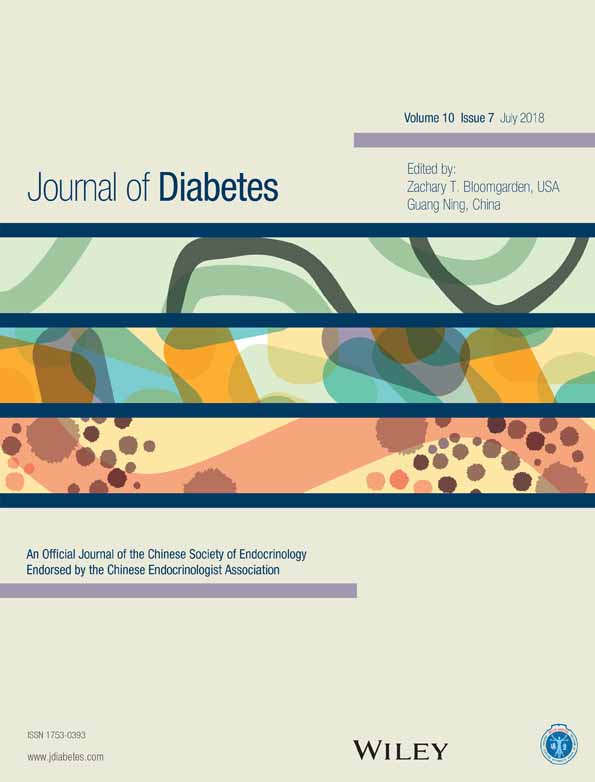Longitudinal study of short-term corticosteroid use by working-age adults with diabetes mellitus: Risks and mitigating factors
处于工作年龄的成年糖尿病患者短期使用糖皮质激素治疗的纵向研究:风险与缓解因素
Abstract
enBackground
This study assessed the frequency of short-term oral corticosteroid use in adults with diabetes, examined the incidence of fractures, venous thromboembolism (VTE), and hospitalization for sepsis after corticosteroid use, and evaluated whether preventative medications mitigated adverse events.
Methods
A longitudinal study (2012–14) was conducted of 1 548 945 adults (aged 18–64 years) who received healthcare coverage through a large national health insurer. Incidence rate ratios (IRR) were calculated using conditional Poisson regression.
Results
Short-term oral corticosteroids were used by 23.9%, 20.8%, and 20.9% of adults with type 2 diabetes, type 1 diabetes, and no diabetes, respectively, during the 3-year period (P < 0.001). Baseline risks of fracture, VTE, and sepsis were greater for individuals with than without diabetes (P < 0.001). The combined effect of having diabetes and using corticosteroids was greater than the sum of the individual effects (synergy indices of 1.17, 1.23, 1.30 for fracture, VTE, and sepsis, respectively). The IRR for VTE in the 5–30 days after corticosteroid use was 3.62 (95% confidence interval [CI] 2.41–5.45). Fractures increased in the 5–30 days after corticosteroid use (IRR 2.06; 95% CI 1.52, 2.80), but concomitant use of ergocalciferol mitigated this risk (IRR 1.13; 95% CI 0.12, 11.07). The risk of hospitalization for sepsis was elevated with corticosteroid use (IRR 3.79; 95% CI 2.05, 7.01), but was mitigated by the concomitant use of statins.
Conclusions
Short-term oral corticosteroid use is common in adults with diabetes and is associated with an elevated, but low, risk of adverse events. The findings suggest that preventative medications may mitigate risk.
摘要
zh背景
这项研究在成年糖尿病患者中评估了短期使用口服糖皮质激素的频率, 调查了使用糖皮质激素后骨折与静脉血栓栓塞(venous thromboembolism, VTE)的发生率以及脓毒症的住院率, 并且评估了预防性用药是否会减少不良事件。
方法
这是一项在1548945名具有大型国家健康保险公司医疗保险的成年(年龄为18-64岁)患者中进行的纵向研究(2012-14)。使用有条件的Poisson回归分析来计算发病率比(incidence rate ratios, IRR)。
结果
在这3年期间, 短期使用口服糖皮质激素治疗的2型糖尿病、1型糖尿病以及非糖尿病成年患者的比例分别为23.9%、20.8%与20.9%(P < 0.001)。与非糖尿病患者相比, 糖尿病患者基线时的骨折、VTE以及脓毒症的风险都更高(P < 0.001)。患糖尿病以及使用糖皮质激素的联合效应大于个体效应之和(骨折、VTE以及脓毒症的协同指数分别为1.17、1.23、1.30)。使用糖皮质激素后的5-30日内发生VTE的IRR为3.62(95%置信区间[CI]为2.41-5.45)。使用糖皮质激素后的5-30日内发生骨折的风险增加(IRR为2.06;95% CI为1.52, 2.80), 但同时使用麦角骨化醇治疗可以减少这种风险(IRR为1.13;95% CI为0.12, 11.07)。使用糖皮质激素后脓毒症的住院风险也增加了(IRR为3.79;95% CI为2.05, 7.01), 但是同时使用他汀类药物治疗可以减少这种风险。
结论
成年糖尿病患者短期使用口服糖皮质激素治疗很常见并且与不良事件风险轻度升高有关。这项研究结果表明预防性用药可以减少这种风险。




